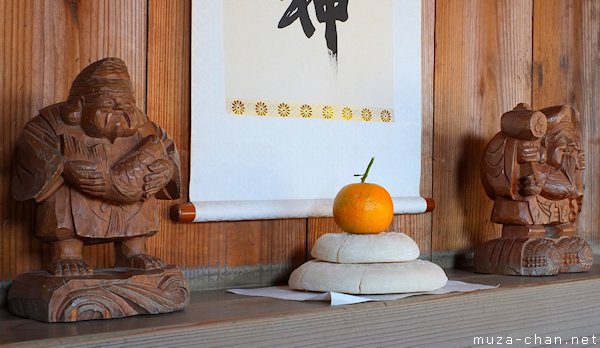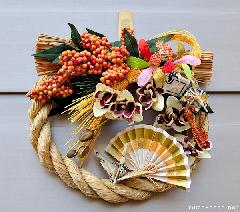After the Kadomatsu and the Shimekazari, another traditional Japanese decoration is usually placed inside the house, in the kamidana, but you will also find it in stores, restaurants and institutions.
This is the Kagamimochi, a simpler decoration, made from two rice cakes (mochi) of different sizes, symbolizing the past year and the year to come. The two mochi have the same shape as the old copper mirrors (kagami) used during the Muromachi period, hence the name: kagami-mochi. A Japanese type of bitter orange (daidai) is placed over the rice cakes, which symbolizes the continuity of the generations and long life, because a kanji writing for daidai 「代々」 can mean “generation to generation". So, the kagamimochi symbolizes the family’s continuity over the years.
Here’s a photo from a traditional Japanese house with a beautiful kagamimochi displayed together with the statues of two of the Seven Gods of Luck (Shichifukujin), Ebisu (God of good fortune, commerce and honest work) and Daikokuten (God of wealth and prosperity).
EXIF Info:
|
Yesterday’s Japan Photo:Shimekazari |



